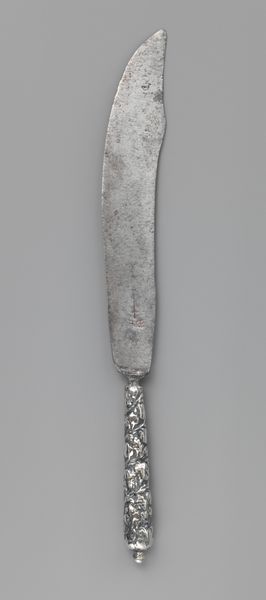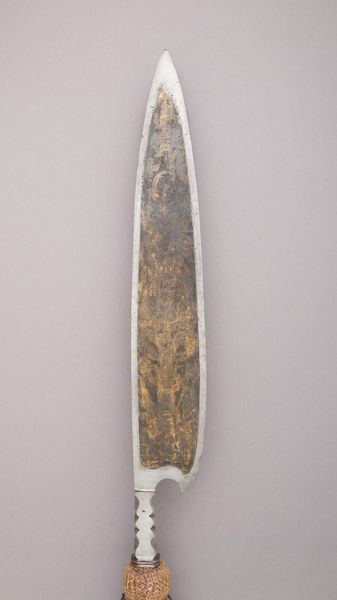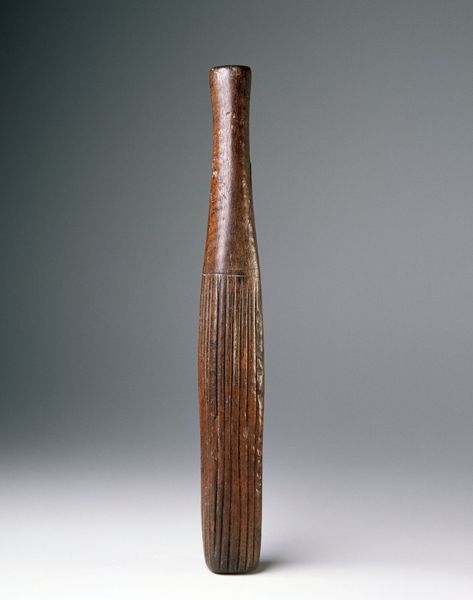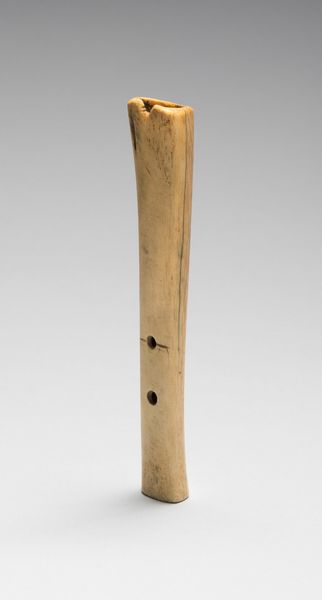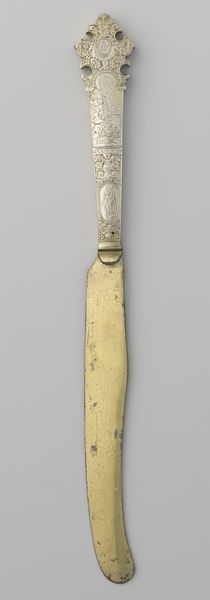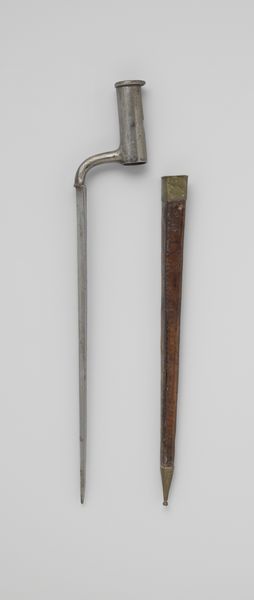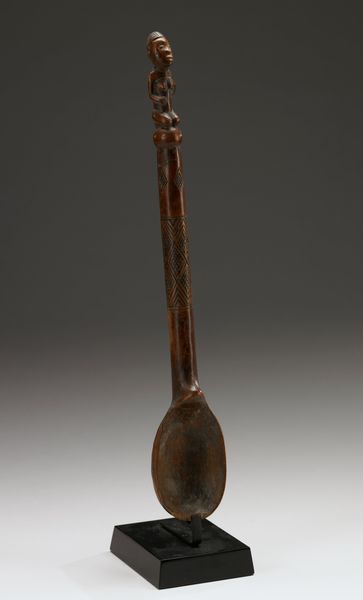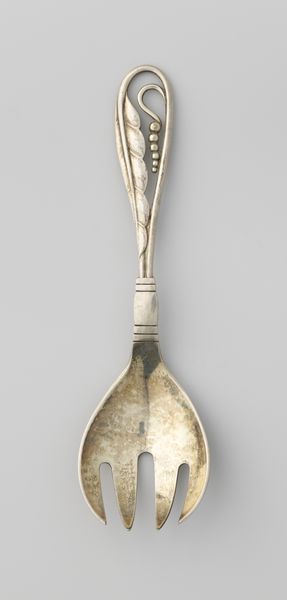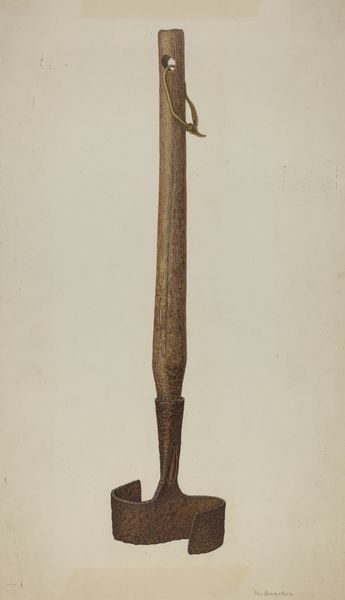
carving, metal, sculpture, wood
#
carving
#
metal
#
stone
#
sculpture
#
sculpting
#
sculpture
#
wood
#
indigenous-americas
Dimensions: 17 3/4 x 2 7/8 x 1 3/8 in. (45.09 x 7.3 x 3.49 cm)
Copyright: Public Domain
This Tlingit fighting dagger is formed with iron, wood, pigment, and fiber. Its handle is crowned with the carved head of an animal, perhaps a bear, its eyes inlaid with striking abalone. The animal, a guardian spirit, embodies strength. Its presence echoes ancient totemic beliefs. The belief in animal spirits dates back to the Paleolithic era, seen in cave paintings in Europe, where animals symbolize power, guidance, and protection. The abalone eyes, gleaming like precious jewels, reflect a primal connection to the ocean, where the subconscious stirs. Such symbols recur across cultures, shifting forms but carrying similar weight. The fighting dagger is not just a tool of combat. It represents the bearer's connection to ancestral power and spiritual protection. A complex weave of nature, spirit, and human intention, passed down through generations.
Comments
minneapolisinstituteofart about 2 years ago
⋮
Every Tlingit man owned and carried a fighting dagger, which was always by his side. The Tlingit referred to this type of dagger as quoth-lar, meaning "to strike with the fist," and they used weapons like this against Native and non-Native enemies. The steel was probably salvaged from ship parts found on the shores of Alaska. The blade was Native-forged and is slightly concave for strength and ease of sharpening. The bear, a central theme in Tlingit art, is considered a relative to humans. It has spiritual power because of this, and is highly respected in Tlingit traditions. The pommel of this dagger is unusual for the exceptionally fine and highly detailed carving of the bear's open mouth and teeth.
Join the conversation
Join millions of artists and users on Artera today and experience the ultimate creative platform.

